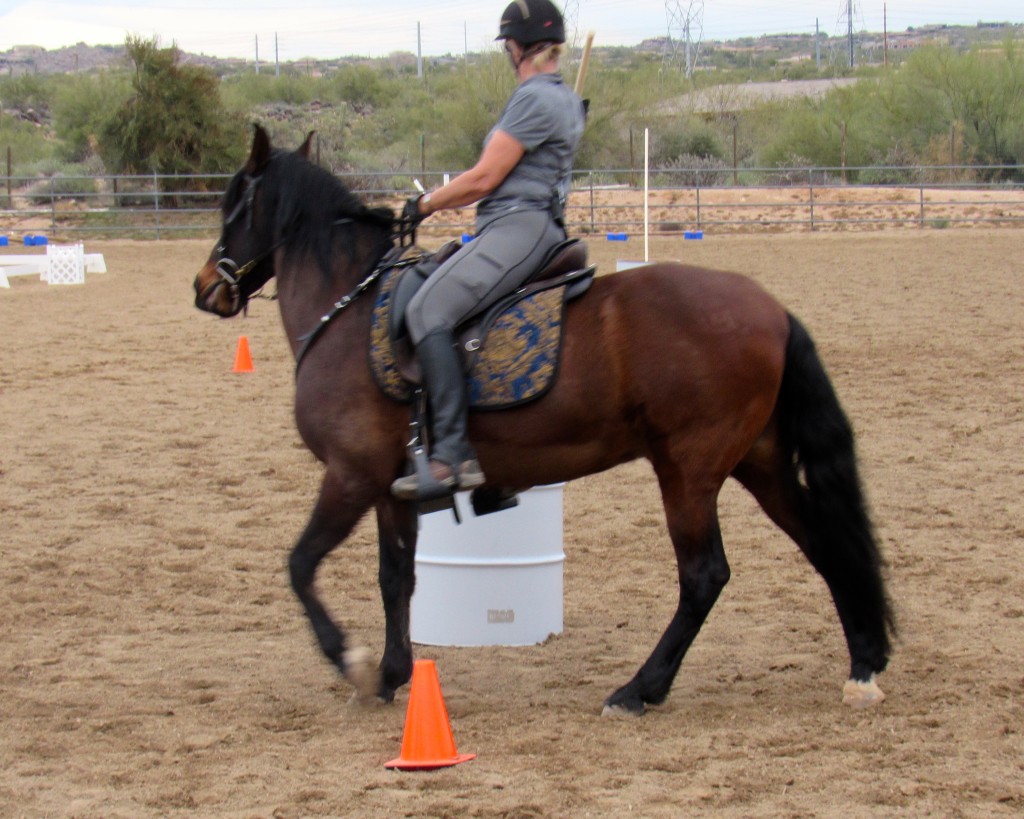So it looks like great fun! With enthusiasm, Laurie Klassen and I signed up to take Working Equitation with Manuel Trigo. http://www.trigomanuel.com/
Guess what? It is great fun!
But it is also extremely difficult, technical and precise! Add the obstacles and tests, all ridden at speed!
We learned right away that even riding with only the left hand would prove a challenge.
Stay tuned for our photos and our posts about our foray into this brave new world on our Mangalarga Marchadors!
What it really looks like at a professional level:
The Haras Cup – Texas 2014
Pedro Torres
From the website: http://www.weiausa.com/
The discipline of Working Equitation (WE) was created with the objective of enhancing the equestrian techniques developed in countries whose riders use horses in different aspects of ranch and fieldwork. The aim is not only to preserve and perpetuate each country’s type of equitation, but also their various traditions, the dress, and tack comprising each nation’s unique cultural equestrian heritage. Working Equitation, therefore, provides an opportunity for the simultaneous comparison of sporting and cultural considerations.
Working Equitation was pioneered by four countries: Portugal, Spain, France and Italy, with the first International competition being held in 1996. In 2004, the World Association for Working Equitation (WAWE) was established to govern the sport. Since that time, the sport has continued to grow and is now well established in Europe and is gaining popularity in North America.
There are four trials, or tests, that make up a Working Equitation competition. The first three, Dressage, Ease of Handling, and Speed, are required for both individual and team competitions. The fourth trial, Cattle Handling, is included for team competitions. It is mandatory at national championship competitions and encouraged at all other competitions when facilities allow.




